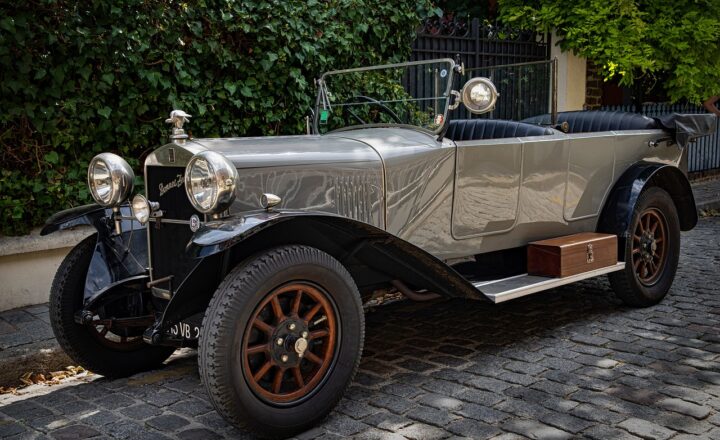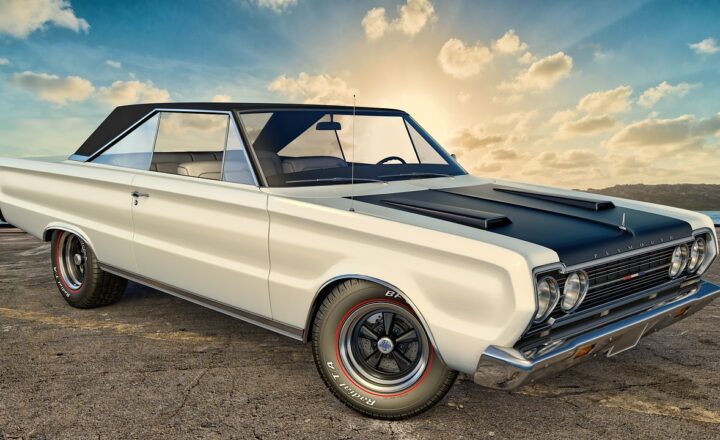
Vintage car collecting is a fascinating hobby that transcends simple automobile ownership; it intertwines history, nostalgia, craftsmanship, and even investment. For many collectors, these cars are more than mere vehicles; they are tangible pieces of art and engineering that tell timeless stories of ingenuity and cultural evolution. In this article, we will explore the reasons behind vintage car collecting, the community surrounding it, key considerations for aspiring collectors, and some of the most coveted classic cars in the market today.
1. The Allure of Vintage Cars
One of the primary reasons people are drawn to vintage cars is the sense of nostalgia they evoke. Many classic cars remind enthusiasts of their childhood memories or represent a bygone era of elegance and style. With meticulous attention to detail and unique designs, vintage cars evoke a sense of romance and nostalgia in a time where mass production dominated the automotive landscape.
The stories behind these cars further enhance their allure. For instance, a 1967 Ford Mustang may not only represent American muscle but also the freedom and rebellion of the 1960s. Similarly, a 1936 Bugatti Type 57 showcases the art deco movement and the luxurious lifestyle of the pre-war elite.
Collecting vintage cars can also be seen as an investment. Many collectors purchase models with the potential for appreciation over time. Certain vintage cars have appreciated exponentially in value, making them sought-after assets for those with a keen eye for classic cars.
2. The Vintage Car Community
The vintage car community is vibrant and diverse, comprising enthusiasts, collectors, restorers, and traders. Being part of this community allows collectors to connect with like-minded individuals, share their passion, and gain access to valuable knowledge and resources.
Car shows, auctions, and vintage car clubs serve as primary venues for social interaction within this community. These events not only allow collectors to showcase their prized possessions but also provide opportunities for learning, networking, and discussing trends in the vintage car market.
In addition, social media platforms have transformed how collectors engage with one another. Online forums, Facebook groups, and Instagram pages dedicated to vintage cars have strengthened the sense of belonging and provided a platform for collectors to share photographs, restoration tips, or even trade parts.
3. Key Considerations for Aspiring Collectors
For those interested in stepping into the world of vintage car collecting, there are several important factors to consider:
- Budget: Determine how much you can comfortably invest. Vintage cars can range from a few thousand dollars to millions, depending on their make, model, and condition.
- Research: Knowledge is crucial. Research various brands, models, and eras to understand which types appeal to you and the nuances of their value and restoration costs.
- Condition and Authenticity: Assess the condition of any vintage car you consider purchasing. Look for signs of rust, mechanical issues, and the authenticity of parts. Determining whether a vehicle has been restored can significantly impact its value.
- Storage and Maintenance: Vintage cars require proper storage and regular maintenance to maintain their value. Consider climate-controlled garages and servicing by professionals experienced with classic vehicles.
- Insurance: Special insurance policies are available for vintage cars. Ensure you understand the options and protect your investment adequately.
Entering the vintage car collecting world necessitates a mix of passion, research, and practical considerations, but the rewards can be immense both personally and financially.
4. Coveted Vintage Cars to Collect
While personal preferences will vary, certain vintage cars are consistently regarded as highly desirable among collectors:
- Ferrari 250 GTO (1962-1964): Widely recognized as the pinnacle of vintage car collecting, only 39 units were produced, and they are now traded for tens of millions of dollars.
- Jaguar E-Type (1961-1975): Labeled by Enzo Ferrari as the most beautiful car ever made, the E-Type’s combination of performance and aesthetics makes it a timeless collectable.
- Porsche 911 (1964-Present): The 911’s iconic design and performance have kept it relevant over decades, making certain vintage models highly sought after.
- Volkswagen Type 2 (Bus) (1950-1967): Beloved for its quirky shape and cultural significance, the VW Bus holds a special place in the hearts of many, making it a popular collector’s item.
- Ford Model T (1908-1927): The original car that made automobiles accessible to the masses, the Model T remains a symbol of American history and innovation.
These classic cars represent significant milestones in automotive history and offer unique experiences for collectors willing to delve into their stories and the cultures that shaped them.
5. The Restoration Process
Restoring a vintage car can be both rewarding and challenging. Many collectors find joy in bringing an old car back to life, but it requires careful planning, patience, and investment.
The restoration process often involves:
- Assessment: A comprehensive evaluation of the vehicle’s condition is essential to determine what parts need replacement or refurbishment. This step helps outline the goals and costs involved in the restoration.
- Sourcing Parts: Finding original or high-quality aftermarket parts is vital. Many collectors connect with specialized suppliers or online marketplaces to obtain needed components.
- Expertise: Depending on your skill level, you may need to hire professionals for complex tasks like engine restoration, paint work, or interior refurbishment.
- Time Commitment: Restorations can be time-consuming. Expect to spend several months or even years bringing a vintage car back to its former glory. Patience and attention to detail are essential.
Ultimately, the culmination of effort spent in restoration can transform a vintage car into a beloved possession, enhancing its aesthetic and monetary value.
Conclusion
The world of vintage car collecting is a captivating blend of passion, history, and community. Whether driven by nostalgia or investment, collectors find joy and purpose in collecting these remarkable vehicles that symbolize automotive artistry and heritage.
By understanding the intricacies of the vintage car market, embracing community, and recognizing the value of proper restoration and maintenance, both seasoned and aspiring collectors can create meaningful experiences in the realm of vintage cars. Who knows? The vintage car that catches your eye today may not just be a vehicle but a cherished piece of history waiting to be part of your journey.







